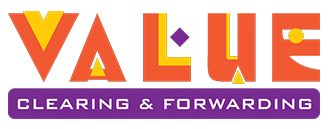By Stephen Segal : Divisional Director : Value Logistics : Clearing & Forwarding
When it comes to clearing and freight forwarding delivery to the supply chain, decisions informed by experience together with how efficiently regulatory and procedural compliance are executed by a Logistics partner, determine how much of a cost saving can be secured. It’s not if by chance a cost saving is a possible outcome, but rather to what degree and under which scenarios it can be unlocked.
The best measure of clearing and forwarding emerges when technical knowledge and in-country know-how is applied simultaneously. This gives a business the right moves for its goods via the right modes of transport, and at the right times. That’s good news for businesses, as they currently operate in many markets where growth is not the order of the day. It is also good news for an end-to-end supply chain solutions provider, such as Value Logistics,
which has through strategic partnerships a presence in every country around the world and nearly two decades of experience gained through its dedicated Clearing & Forwarding division.
Heavyweight value-add on board
In the early 2000’s a number of companies tried to acquire and combine logistics competencies to offer end-to-end supply chain services. This was no easy feat and they experienced many challenges with little or no success. That did not deter the resolute Value Logistics team, who were the daredevils of that decade. They forged ahead and added Clearing and Forwarding to their portfolio of services, and made it work. Customers benefitted by getting their supply chain handled end-to-end, with total care.
At Value today we continue to dare. With each shipment we look for opportunities to drive efficiency and cost-saving for each customer. In doing so we have found that putting customers first is the golden key in the ignition. However, getting this right there are critical enablers and junctures for driving value in a supply chain on the move across borders.
Getting into the right mode
Logistics providers need to ascertain and guide customers as to which mode of shipment cargo, transport and/or multi-modal approach will best serve its business needs. This differs per customer and depends on the strategic priorities or the requirements of a specific shipment. However, such logistic options combined hold the opportunity to unlock significant cost savings and operational efficiencies.
Engaging at a broader industry level around transportation modes and related infrastructural development, the Group historically liaised with Transnet to set up a partnership for the development of rail between Durban and Johannesburg. Cato Ridge was identified as a strategic inland port and Transnet subsequently piloted this development, while Value Logistics established a depot close to the terminal.
Over and above a strong partnership basis to deliver via road, rail and sea freight, a clearing and forwarding expert needs to provide airtight air freight competencies. This allows for the supply chain specialist to provide full container loads, breakbulk or less than container loads (LCL) to a customer.
Looking at Value Logistics, multi-modal strength combined with an extended logistics infrastructure that includes trucks and delivery vehicles, enables the likes of air freight parcels to be collected and delivered quickly, which in turn enables a cost-effective express service. By applying its breadth of business and economies of scale, it has the ability to breakbulk shipments which helps customers, in our current economic climate, purchase less product at a time.

